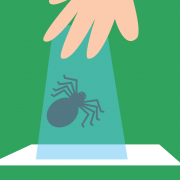Plan to go exploring outdoors to discuss how God cares for animals. As you walk with your kids, point out the animals you see and discuss how God takes care of them. Below you’ll also find some facts about animals mentioned in the Bible: lions, wild donkeys, cows, mountain goats and sea life. Included with the animal facts are some additional ideas to use on your walk.
For each type of animal, invite your children to think about how God takes care of them.
Questions for discussion
- What does each animal eat?
- How does it get its food?
- Where does it live?
- How does it stay safe?
- Where does it get water?
Read aloud the animal facts provided later in this section. Point out that animals need the same things we do: food, water and protection from the weather and from enemies. The Bible tells us that God cares for the animals. The Bible also says that God considers us much more valuable than birds, so we can be sure that God will take care of us too.
Pray with your kids, praising and thanking God for His love and care. Here’s a sample prayer based on Psalm 147:7-9 and Luke 12:22-24:
Dear God, it makes me so happy to see how You care for us and for all the animals that I want to sing! You put clouds in the sky and send rain to help all the plants grow. Thank You for the rain that waters the earth! Thank You that we don’t need to worry about being fed and that the animals don’t have to worry either. Seeing what good care You take of the animals reminds me that You will take care of me too. Thank You Jesus! Amen.
Relevant Scripture
Psalm 147:7-9 “Sing to the Lord with thanksgiving; make music to our God on the harp. He covers the sky with clouds; He supplies the earth with rain and makes grass grow on the hills. He provides food for the cattle and for the young ravens when they call.”
Luke 12:22-24 “Then Jesus said to His disciples: ‘Therefore I tell you, do not worry about your life, what you will eat; or about your body, what you will wear. Life is more than food, and the body more than clothes. Consider the ravens: They do not sow or reap, they have no storeroom or barn; yet God feeds them. And how much more valuable you are than birds!”
Animal facts for discussion
Lions
On your walk, invite one or two children to hide in the grass or trees, pretending to be lions who jump out on the rest of your group. After your “lion encounter,” read Job 38:39-41 (see below). Explain that, in this Bible passage, God is reminding Job that He cares for the lions and the ravens. Now discuss the needs of lions using the facts below.
Habitat: Lions live in grasslands, dense bush and woodlands, but not in jungles.
Diet: It may sound odd, but the female lions do much more of the hunting than the males. Their prey includes large animals such as wildebeests, zebras, buffaloes, young elephants, rhinos, hippos and giraffes. Lions will also eat smaller animals like mice, lizards, tortoises, warthogs, antelopes and even crocodiles. As for water, lions drink water daily if there is water around; however, they can go for four or five days without drinking any water at all.
Protection and predators: Their size, strength, sharp claws and teeth provide lions with protection from other animals; however, people kill lions for cultural rituals and for sport. Lions are now considered a protected animal in many parts of Africa.
Source for lion facts: Outtoafrica.nl/animals/englion.html
Relevant Scripture
Job 38:39-41 “Do you hunt the prey for the lioness and satisfy the hunger of the lions when they crouch in their dens or lie in wait in a thicket? Who provides food for the raven when its young cry out to God and wander about for lack of food?”
Wild donkeys
Invite your children to pretend they are wild donkeys running around, kicking up their heels. You could even have a lion chase a donkey. After the frolic, call your wild animals together and read Psalm 104:10-13, 21-22. Next, discuss the needs of wild donkeys and your choice of birds.
Habitat: The African wild donkey lives in hilly and stony deserts and in the bushlands and grasslands. It avoids sandy areas.
Diet: Wild donkeys need to live where there is water to drink. The African wild donkey is considered a “grazer,” meaning that it eats mainly grasses and small shrubs or plants. It can eat even the hardest desert grasses because it uses its teeth and hooves to break up the clumps of grass.
Protection and predators: The wild donkey can run very fast! It can run as fast as cars typically drive on city streets (50 km/h). People still hunt donkeys, as do large wild cats. The African wild donkey is an endangered species, meaning there are so few left that they are in danger of being completely gone.
Source for wild donkey facts: Animalinfo.org/species/artiperi/equuafri.htm
Relevant Scripture
Psalm 104:10-13 “He makes springs pour water into the ravines; it flows between the mountains. They give water to all the beasts of the field; the wild donkeys quench their thirst. The birds of the air nest by the waters; they sing among the branches. He waters the mountains from His upper chambers; the earth is satisfied with the fruit of His work.”
Psalm 104:21-22 “The lions roar for their prey and seek their food from God. The sun rises and they steal away; they return and lie down in their dens.”
Domestic cattle
Have your children pretend to be cows by finding some grass and pretending to eat it. Then read Psalm 104:14-15. Invite your children to think of food we get “from the earth.” (You can trace any food’s origin to the earth!) Now discuss the needs of cows and the ways cows provide food for us too.
Habitat: Cows can live almost anywhere in the world as long as their owners provide shelter and food for them. Cows can even live outdoors during the cold Canadian winter. There are many different kinds of cows. The breeds that are best at producing milk are called dairy cows. Beef cattle are the ones raised for their meat.
Diet: Cows eat grass, hay (dried grasses and plants), grain and silage (which is kind of like sauerkraut made with grass). Like humans, cows are happiest when they have water to drink every day.
Protection and predators: The farmer cares for his herd of cows by providing food, adequate shelter and protection from predators like coyotes. Coyotes will typically prey on very young or weak cows. The mother cow will protect her calf from predators by snorting and pawing the ground with her hooves. If need be, she will charge and head butt a person or any other creature who she thinks is threatening her calf.
Wild cows still exist in a wide range of species, including bison, yak, banteng, gaur, water buffalo, anoa, tamaraw and saola. Many of these animals are endangered. If you have children who are especially interested in nature, you could do some research on these animals together.
Source for wild cattle facts: Wildcattleconservation.org
Relevant Scripture
Psalm 104:14-15 “He makes grass grow for the cattle, and plants for man to cultivate – bringing forth food
from the earth: wine that gladdens the heart of man, oil to make his face shine, and bread that sustains his heart.”
Mountain goat
Ideally you’ll be able to find a play structure or some rocks where your children can pretend to be mountain boats. Read Psalm 104:18, then discuss the unique habitat and needs of mountain goats.
Habitat: The Rocky Mountain goat lives in the mountain areas of Western Canada and the United States.
Diet: Grasses, leaves and evergreen trees are the foods favoured by mountain goats. Mountain goats drink from mountain springs and streams and can also eat snow for hydration.
Protection and predators: Bears and cougars are the mountain goat’s main enemies. Mountain goats stay safe by being quick and sure footed. They are extremely agile on rocky ledges and are very efficient climbers. They can climb up 457 m (1,500 feet) in just 20 minutes. (At this rate a mountain goat could climb to the top of the CN Tower, the tallest building in Canada, in less than 25 minutes. The CN Tower measures 1,815.4 feet.)
Since the Rocky Mountain goat lives in areas where people don’t usually go, or can’t go, the mountain goat has not been as affected by human activity as many other large North American mammals have been.
Source for mountain goat facts: Ultimateungulate.com
Relevant Scripture
Psalm 104:18 “The high mountains belong to the wild goats; the crags are a refuge for the coneys.”
(A “coney” or “hyrax” is a small mammal that superficially resembles a guinea pig.)
Sea life
Lastly, invite your children to pretend to be fish, or some other kind of sea creature. Read Psalm 104:25,27-28. If you wish, you can research the needs of the sea animals your children are most interested in.
Relevant Scripture
Psalm 104:25, 27-28 “There is the sea, vast and spacious, teeming with creatures beyond number – living thi
ngs both large and small. . . . These all look to You to give them their food at the proper time. When You give it to them, they gather it up; when You open Your hand, they are satisfied with good things.”







